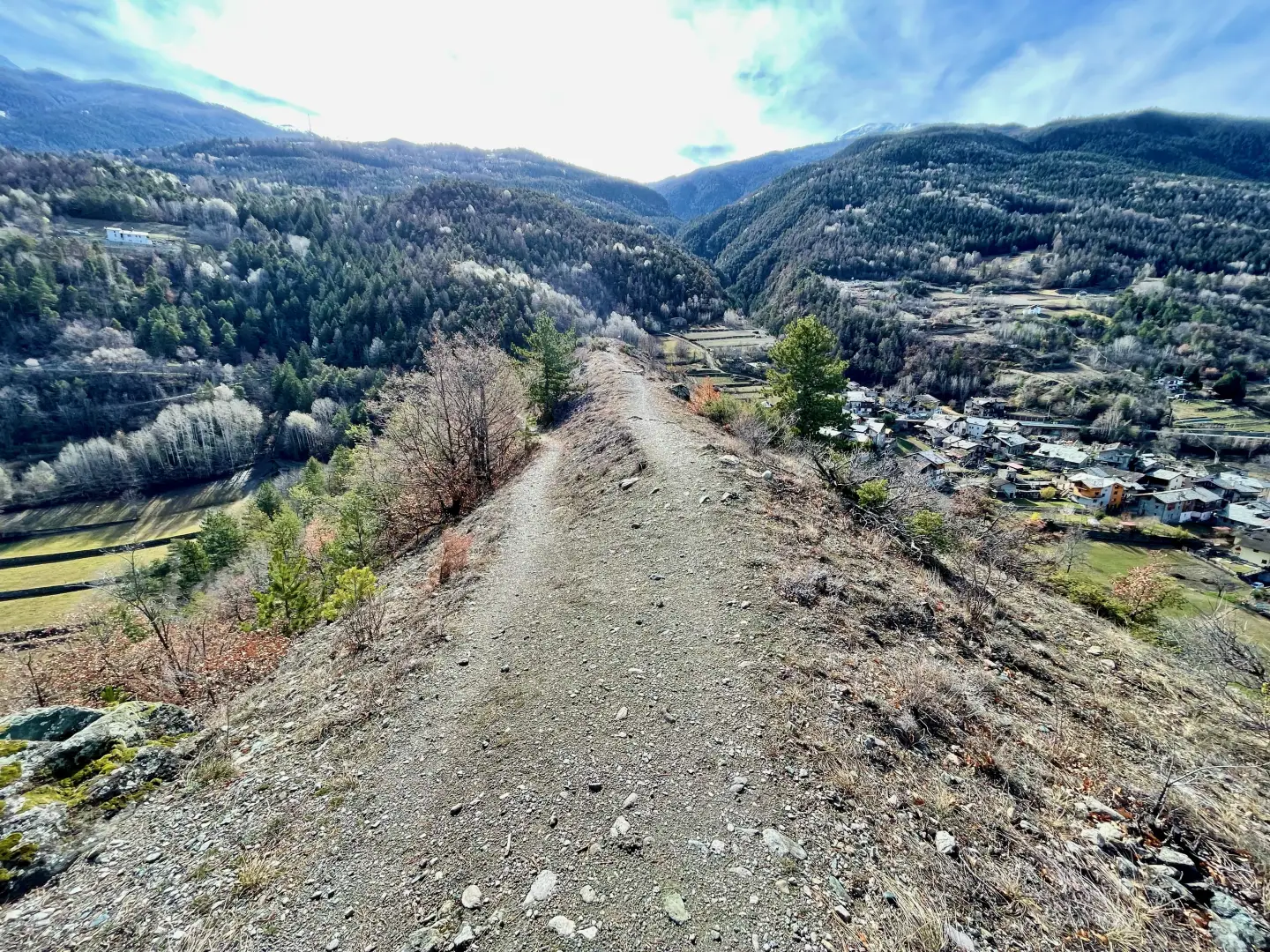Côte de Gargantua

Access
Access to the Côte de Gargantua is mainly from the municipality of Gressan via signposted paths that wind through the moraine relief. Use of the car parks located near the centre of Gressan is recommended; from here, via municipal roads and footpaths, the main entrance to the reserve is easily reached. There is no public transport directly serving the reserve, but the proximity to Aosta ensures regular road and rail links to the main town, from where one travels in the direction of Gressan.
Introduction
The Côte de Gargantua Nature Reserve is located in the Dora Baltea Valley, immediately below the municipality of Gressan in Valle d'Aosta, and protects an environment of considerable naturalistic value situated on ancient moraine deposits left by the retreat of glaciers during the Ice Age. The area is characterised by an evident landscape uniqueness, due to its geological origin and the particular microclimatic conditions that favour the development of arid vegetation and numerous rare botanical species. The name of the reserve has its roots in popular tradition: according to a legend, the small finger of the giant Gargantua, the protagonist of Rabelais' work, is buried in this very area, giving the place a strong identity also from a cultural point of view.
Description
The Côte de Gargantua is located on a south-facing, sunny hillside with tendentially dry soils, where xerophilous flora adapted to arid conditions is prominent. Among the most significant species are the Telefio di Imperato (Telephium imperati), the Linaria simplex (Linaiola piccola) and the Artemisia valesiaca (Artemisia del Vallese), the latter found in Italy exclusively in Valle d'Aosta. These are flanked by other important species such as the Stipa pennata (known as the 'barometer plant') and Berberis vulgaris (common berberis), together with fauna represented by small mammals such as the Erinaceus europaeus (hedgehog). The mosaic of environments and microhabitats guarantees a rich and well-structured biodiversity, which also includes numerous species of insects and butterflies, such as Iphiclides podalirius (Swallowtail) and Parnassius apollo (Apollo), as well as reptiles such as Podarcis muralis (wall lizard) and Hierophis viridiflavus (grass snake). The presence of mammals such as the Glis glis (dormouse) and the fox (Vulpes vulpes) testifies to the natural balance of the area, while the reserve is an important passage point for migratory birds that find refuge in the surrounding woods and meadows.
In addition to its biological value, the reserve also stands out from a historical and cultural point of view: the accumulation of moraine material that forms its substrate has allowed the vegetation to settle and specialise, while the legend of Gargantua and the local place names keep the collective memory alive. An integral part of the European Natura 2000 network, the Côte de Gargantua is subject to specific conservation measures aimed at protecting habitats and species of Community interest, paying attention to both protection and accessibility. The hiking itineraries in the reserve allow you to admire the panorama of the Dora Baltea and the surrounding peaks, enhancing an area that lends itself to nature observation and environmentally-friendly trekking activities in all seasons.
Information
Area: about 5.5 km²
Maximum altitude: 774 m (Côte de Gargantua)
Minimum altitude: about 500 m
Municipalities concerned: Gressan
Natura 2000 Network: Yes
Official website: www.vivavda.it/aree/area_i9f3c.html?area=6&n=Riserva%20naturale%20%20%20%20C%C3%B4te%20de%20Gargantua